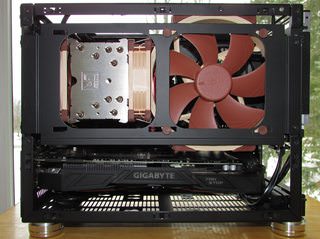Thanks! Some final questions (I think) -You can see my setup here:
Images: http://imgur.com/a/5yE6V
I fastened both fans directly to the side bracket.
How do you have the fans wired - are the P14s connected to the same fan header with the C14s included splitter? And you seem to have them on the left side and left bottom, instead of left/right on the side plate? Since they're not PWM, are you using the Low-Noise Adapters, or running them full-blast?
I see you are also using an A15 and two S12As in your description; where are they in the case and how are they wired up, if you don't mind me asking? (Can't pick these out by sight yet
Thanks again, this is helpful while I wait to RMA my CPU.
![[H]ard|Forum](/styles/hardforum/xenforo/logo_dark.png)









